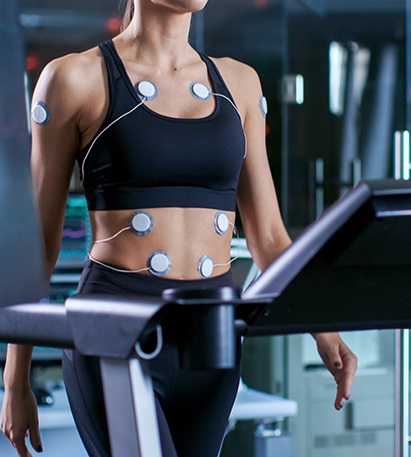We offer "Female Only" appointments for all our tests, including echocardiograms.
Please ask for our "Female Only" option if you prefer an all female team (cardiac technician, sonographer and/or cardiologist) for your test.
We offer "Female Only" appointments for all our tests, including echocardiograms.
Please ask for our "Female Only" option if you prefer an all female team (cardiac technician, sonographer and/or cardiologist) for your test.


A Stress Echocardiogram combines a resting Transthoracic Echocardiogram (heart ultrasound) with an exercise stress test.
In addition to providing much of the information obtained by a resting Transthoracic Echocardiogram, a Stress Echocardiogram also evaluates how your heart responds to exercise. This test can investigate symptoms such as chest pain/discomfort and/or shortness of breath and can also assess heart muscle conditions (cardiomyopathies), valve disease or heart rhythm disturbances (arrhythmia).
A common misconception is that you need to be fit or be able to run to undertake this test – this is not the case as we will tailor the treadmill protocol to your exercise performance.
In preparation for this test, please
The test takes about 30 minutes to complete.